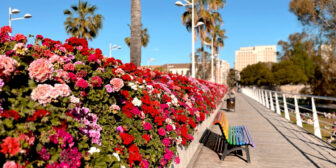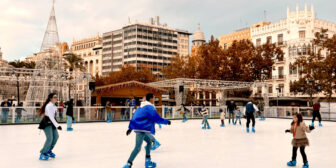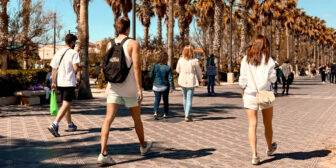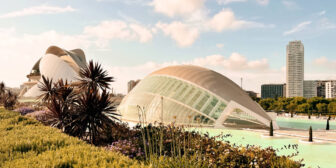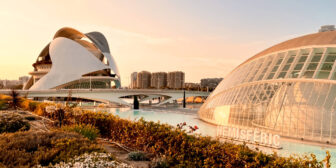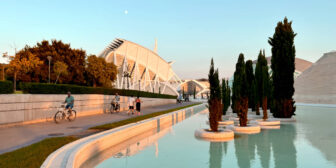If you’re looking for an easy day trip from Valencia, the little-known city of Sagunto, approximately 30 km north, might be exactly what you’re looking for. Sagunto has beautiful sandy beaches, interesting architecture and lots of history.
Just like Gandia and Castellón de la Plana, the city is divided in two – the historical town and the harbor area, approximately 5 km apart. While two thirds of the population lives by the port area, the old town is actually more interesting to visit, unless you want to lounge on the beach.
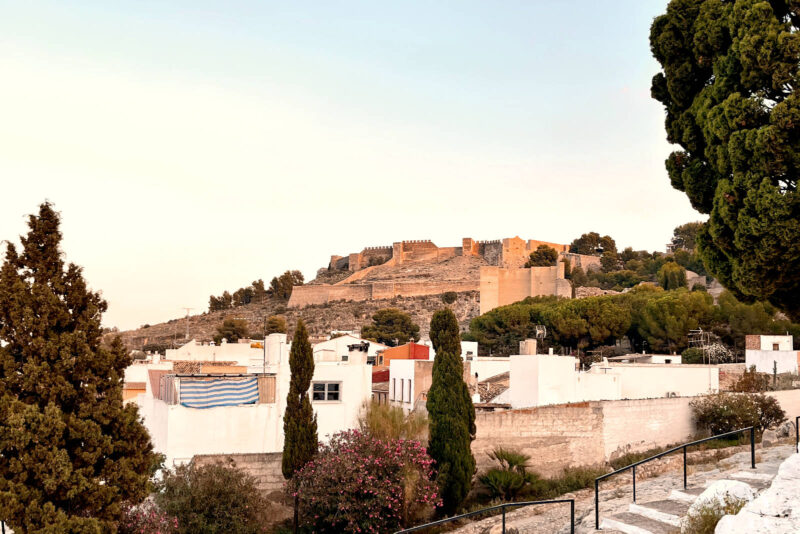
Sagunto’s origins trace back to the Bronze Age when a small Iberian settlement called Arse was founded on a hill in Sierra Calderona.
In the year 219 BC, this settlement took central stage in the history books when, after an arduous eight-month siege, it fell under the control of Hannibal’s troops. This moment became the catalyst of the infamous Second Punic War between Rome and Carthage, one of the bloodiest wars of Antiquity.
A few years later, the Romans took over and so, Arse became Saguntum. Over the centuries, a parade of cultures, from the Visigoths to the Moors, and finally the Christians left their mark on the city. Yet peace was never a given, and Sagunto was under siege once again during the Napoleonic Wars at the beginning of the 19th century.
Fast forward to the 21st century, Sagunto is an important Mediterranean port and the site of the upcoming Volkswagen mega factory for batteries for electric cars, which bridges the city’s industrial past with a promising future.
In This Article
Best things to do in Sagunto
I’ve visited Sagunto several times and always enjoyed it. So here’s a list of my favorite things to do in Sagunto on a day trip from Valencia.
Contemplate over 2,000 years of history from Sagunto Castle
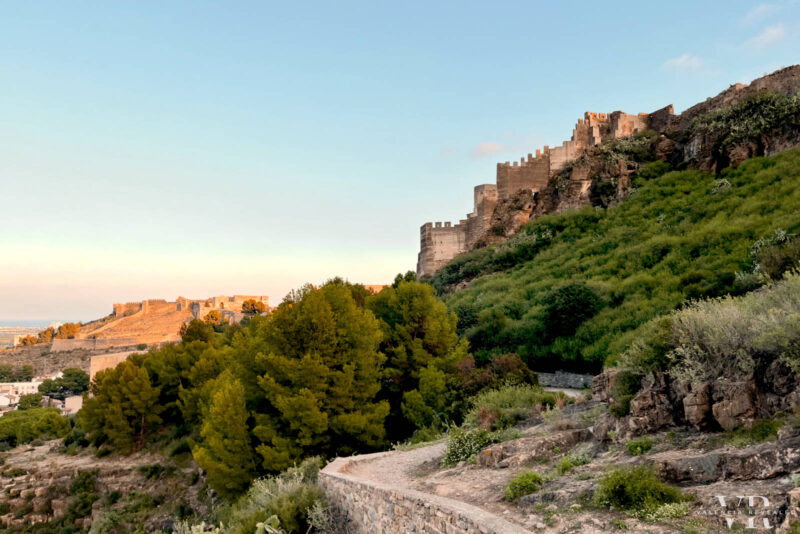
Sagunto Castle is a massive walled fortress that dates all the way back to the Iberian period. It is the main attraction in the city and it’s perched atop a steep hill from where you can enjoy breathtaking panoramic views of the surrounding landscape and the Mediterranean Sea. Its imposing stone walls date mainly from the Islamic period and extend for approximately 1 km.
Visit the Roman Theater
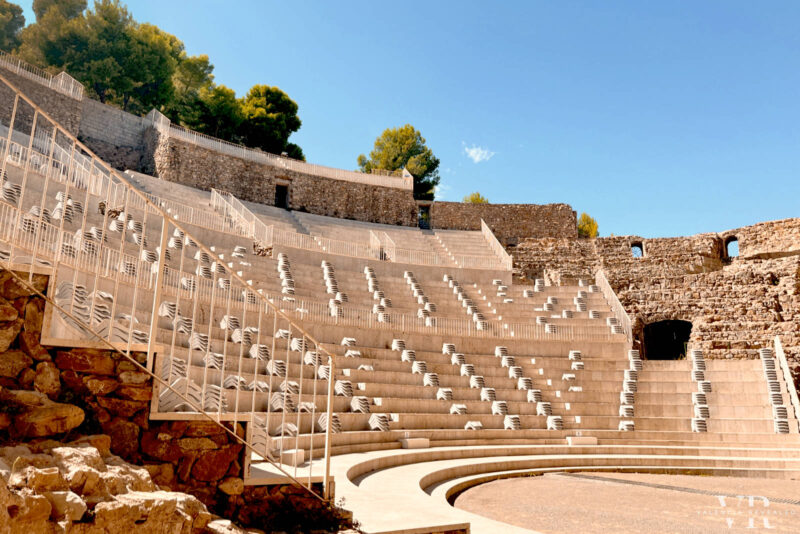
Next to the castle, the Roman Theater is another major attractions in Sagunto. Made of an amphitheater with tiered seating and a generous stage, the theater underwent extensive renovation in recent years, which has been the subject of great debate. The theater has a capacity for 8,000 people and is still in use today, hosting the Sagunto a Escena festival every summer.
See dazzling theater costumes and masks at Casa dels Berenguer
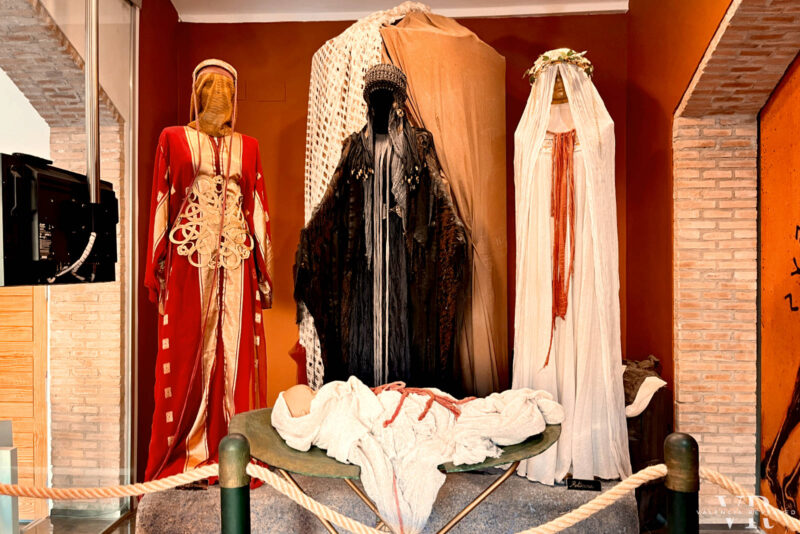
In the heart of the old town, Casa dels Berenguer is a beautiful Gothic palace recently converted into a modern tourist office and museum. Worth checking it out to see the costumes worn by actors during the theater festival as well as what is believed to be a Jewish ritual bath (“mikve”) and the remains of the Temple of Diana dating to the 4th century BC.
Explore the Jewish Quarter
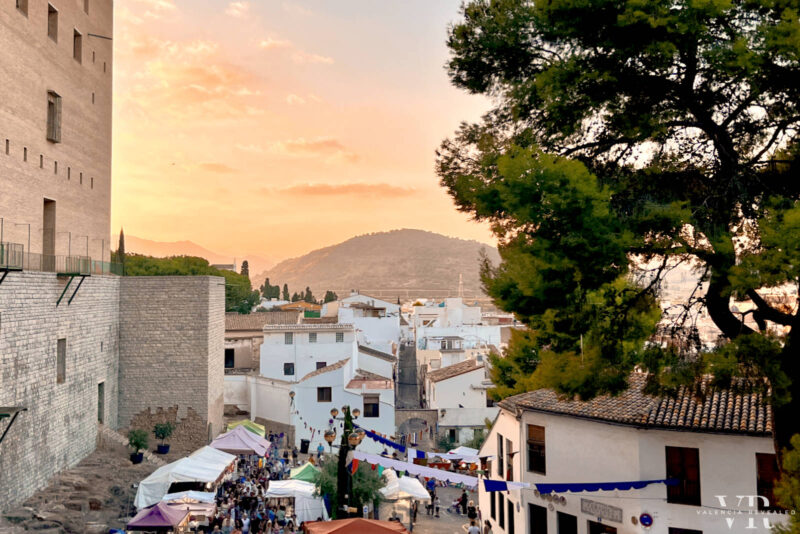
Up next, walk through Puerta de La Judería gate and take a stroll along the history infused streets of the old Jewish Quarter. Sagunto’s Jewish community was among the oldest in Spain, dating back to the 2nd century. After the Reconquista, they were allowed to fortify their quarter and the community managed to flourish for a while, but eventually had to flee when the Inquisition started in 1492.
Discover Vía del Pórtico and Domus dels Peixos
If you like old Roman ruins, I guarantee you’ll be blown away by Vía del Pórtico (a 60 meters long Roman road) and the nearby Domus dels Peixos (a Roman villa with original wall paintings). These incredible archaeological discoveries, dating to the 1st century AD, were unearthed during the construction of new apartment buildings in 1991. What’s even more mind blowing is that construction carried on above the site, with the basement being converted into a one-of-a-kind museum.
Walk the Calvary to the Hermitage of Our Lady of Solitude
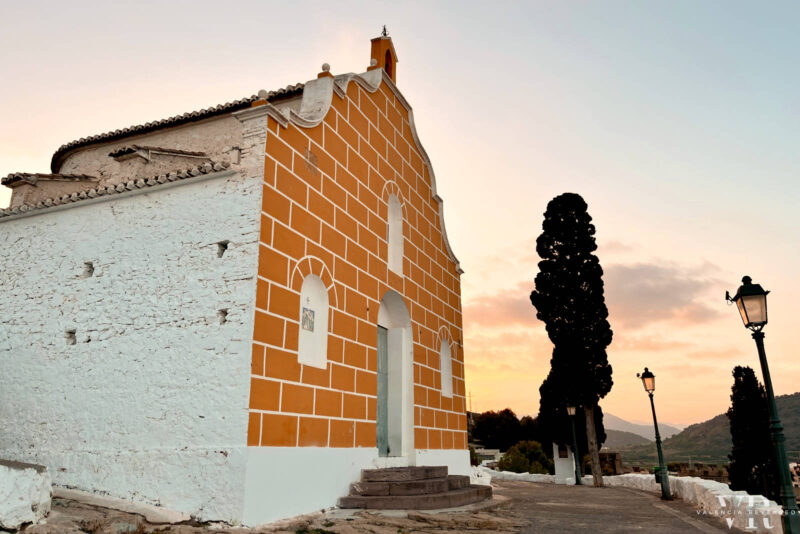
Sagunto has several hermitages, but in my opinion, Ermita de la Virgen de la Soledad (also called del Calvario) is the prettiest one. Build on the slope of the castle hill during the 18th century, from here you can enjoy some pretty remarkable views of Sagunto and the castle itself. Its striking yellow facade contrasts greatly with the white of the Calvary, a zigzag path illustrating the Passion and Death of Jesus Christ.
Admire the Church of Santa Maria
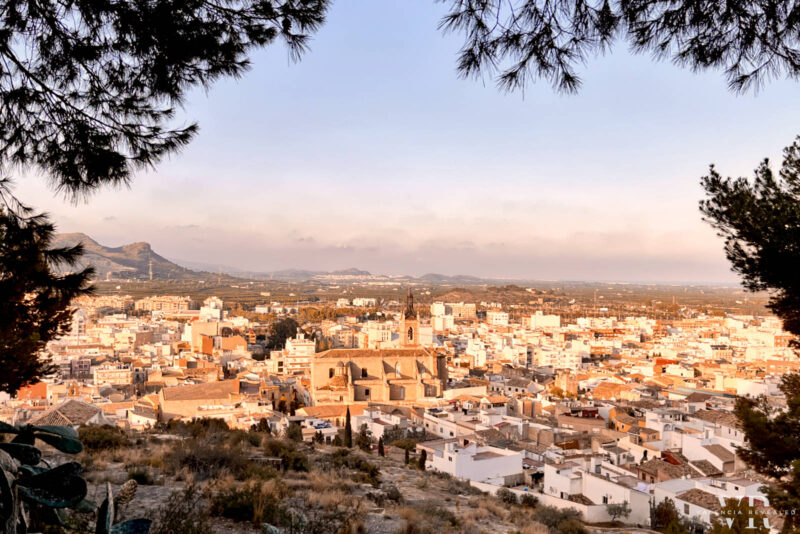
The Church of Santa Maria looms over Sagunto and can be seen from pretty much any viewpoint in the city. Its construction began in the 14th century, on the site of a former mosque. Subsequent centuries saw various additions, resulting in a blend of architectural styles. If the opportunity arises, do venture inside to explore its imposing interior.
Stroll around Plaza Mayor
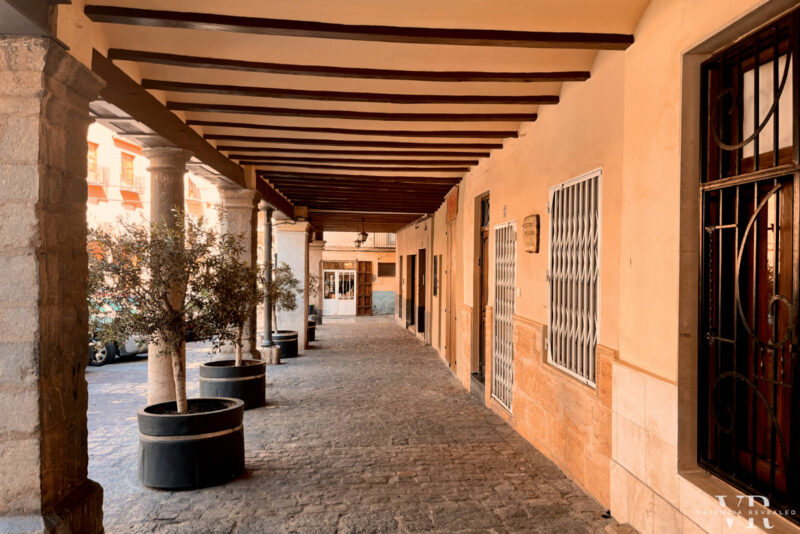
Next to the church, Plaza Mayor has been the commercial and cultural center of Sagunto since medieval times. This pretty rectangular square is surrounded by attention grabbing porticos, but what I find the most intriguing is that they were built using Roman column shafts. Also within the square, look for Puerta del Almudín, an old wooden door that once served as the entrance to Sagunto’s granary.
See a relic of Sagunto’s industrial past
Leaving the old town behind, head to Puerto de Sagunto where you’ll find Horno Alto No. 2. This relic of Sagunto’s industrial past was built in 1922 and is the only furnace left standing of the three that existed. Though no longer operational, recent restoration efforts have made it accessible for guided tours. The tour includes climbing the exterior staircase to the work and refrigeration platform as well as a visit to the nearby warehouses.
Relax on the beach
Finally, take a deep breath and unwind on the beach. With golden sands and a Blue Flag status, Sagunto’s shores are highly sought after during the summer months. But the promenade has a variety of restaurants and leisure options that stay open into the colder season, so a walk on the beach and a comforting paella meal is always an option.
My advice for visiting Sagunto
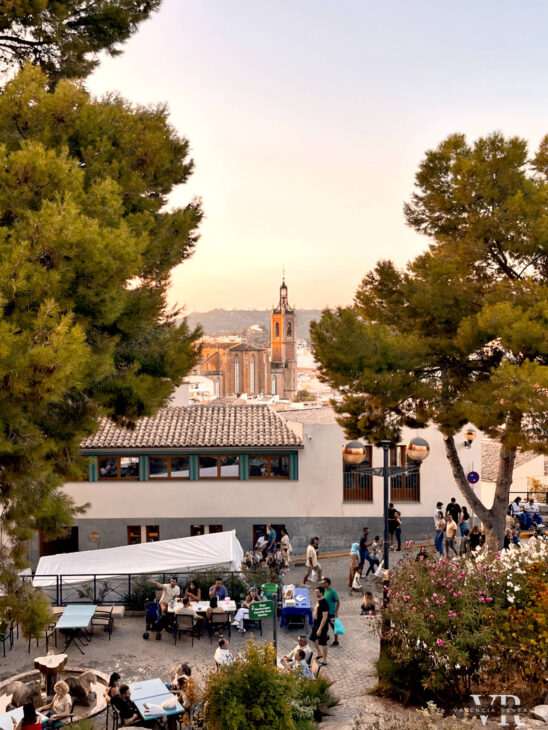
1. My #1 advice if you’re planning to visit the Sagunto Castle is to bring good shoes and to pay attention where you’re stepping. The castle is huge and the terrain is uneven.
2. Inside the castle, there are no shops or cafés, so it’s important to bring a bottle of water with you, especially if you’re visiting during the hot summer months. Better yet if the bottle is insulated to keep your water cold.
3. The old part of Sagunto developed on the hill leading up to the castle. As such, many of Sagunto’s attractions involve walking uphill. Some parts can be a bit steep and challenging, particularly on a hot summer day.
4. Winters, on the other hand, can be windy, so if you visit the castle in the colder months, it’s a good idea to bring a windproof jacket, just in case.
5. Many shops and cafés in the historic part of Sagunto only open in the afternoon. If you’re in Sagunto in the morning, your choices for a coffee stop might be somewhat limited.
Best time to visit Sagunto
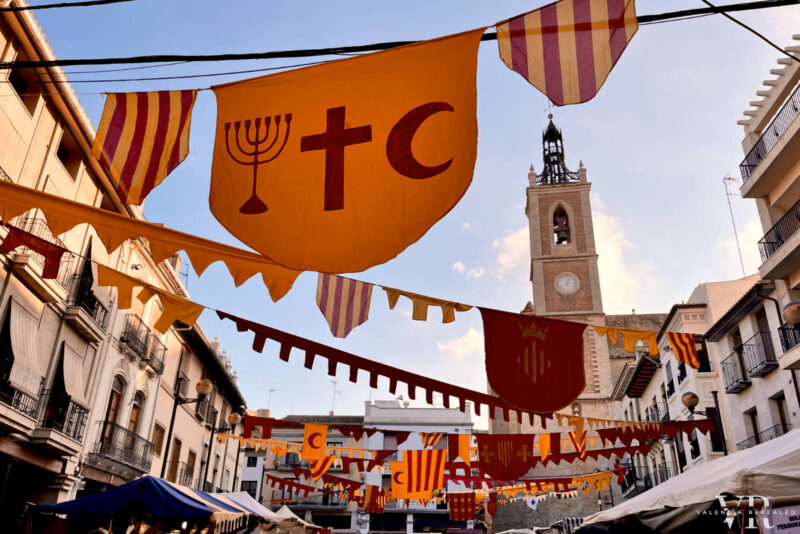
Sagunto can be nice to visit year round, but it’s particularly popular in summer due to its beautiful beaches. Personally, I think the best time to experience Sagunto is during the October 9 festivities, when the city celebrates the Day of the Valencian Community. In the days leading up to this celebration, the city comes alive with a bustling Medieval market that winds its way up the streets that lead to the castle, infusing the city with a unique atmosphere.
How to get to Sagunto from Valencia
Car: Follow V-21, then N-340 towards Sagunto.
Bus: MetroBús (yellow buses) lines L111, L114, L115, L116, L310 operated by AVSA. Zone AB.
Train: Take cercanías train line C6 from the North Train Station. The journey to Sagunto lasts approximately 30 minutes. The train leaves you in the historical part of Sagunto. If you want to go to the beach, you’ll have to take a local bus or taxi.

